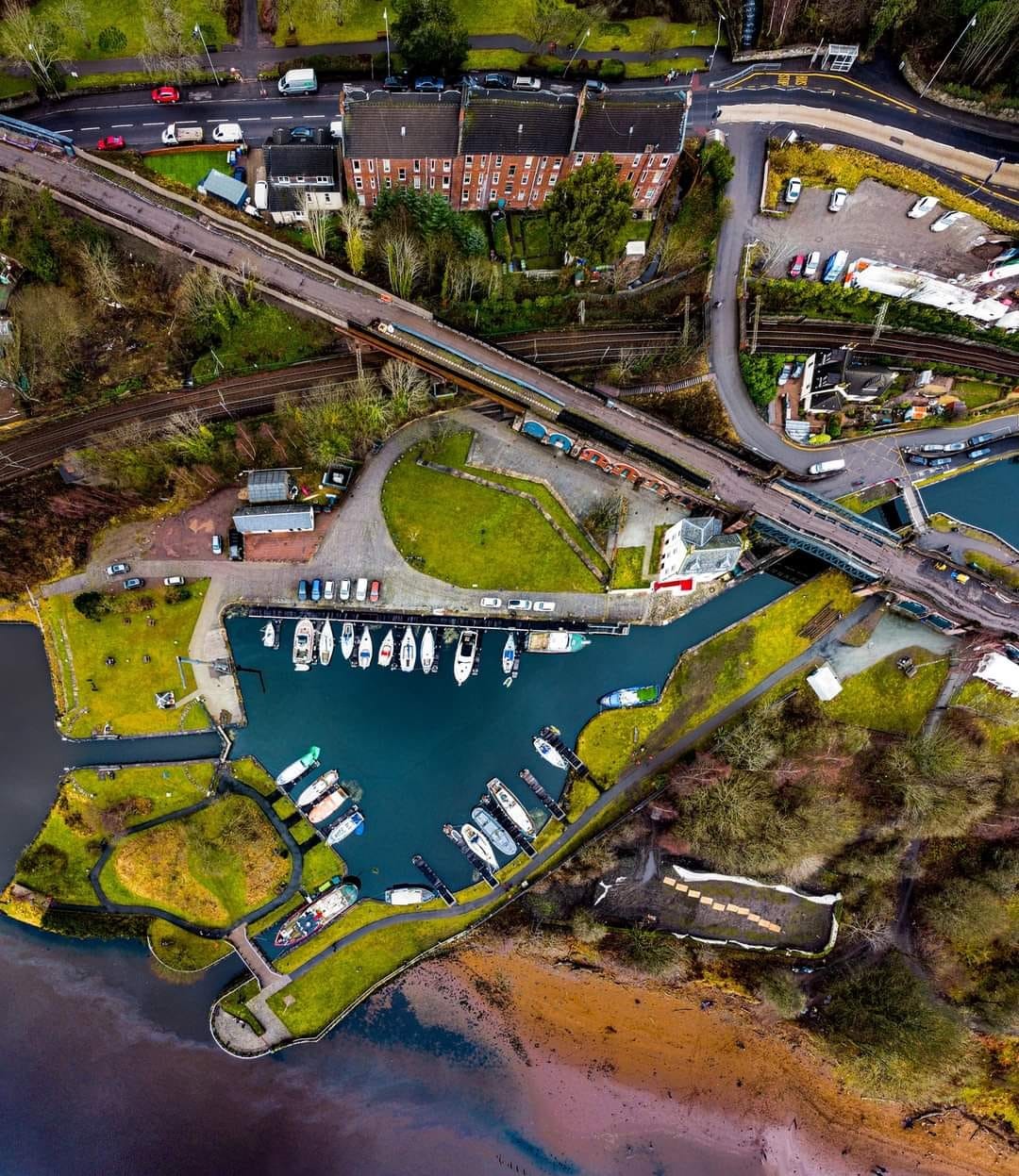Scotland’s answer to the New York Highline has been unveiled at Bowling Harbour in West Dunbartonshire with the transformation of a disused railway viaduct into a state-of-the-art linear park and walking, wheeling and cycling route at the western gateway to the Lowland canals. The Bowline, the jewel in the crown of a £10m regeneration programme at Bowling Harbour, connects the Forth & Clyde Canal towpath to the wider National Cycle Network (NCN), providing virtually uninterrupted off-road access from Glasgow to Loch Lomond & The Trossachs National Park.
The fully accessible linear park boasts breath-taking views over the historic canal to the River Clyde and beyond. A new, high-quality access ramp has also been installed, allowing everyone walking, wheeling and cycling to access the National Cycle Network route for everyday and leisure journeys. The latest addition to National Cycle Network Route 7 means everyone, regardless of age or ability, can walk, wheel or cycle between Loch Lomond, Dumbarton and Glasgow on a virtually traffic-free route.
The Bowline marks a new era
The harbour will benefit from the growing number of people choosing to walk, wheel and cycle across the nation, as more people give up the car and take to active travel. Catherine Topley, CEO at Scottish Canals said: “The opening of The Bowline marks a new era for Bowling Harbour, one built upon sustainability that everyone can enjoy. Active travellers making their way along National Cycle Network Route 7 can now take full advantage of the harbour’s regeneration. Our renovated railway arches host a variety of local businesses transforming the area into a hub of activity, creating new jobs and opportunities. It’s a special destination and one that is well worth a visit.”
The investment in Bowling Harbour will not only promote tourism, help tackle health inequalities and fight climate change by promoting carbon neutral travel, but act as a catalyst for further investment around the area.

